The Significance of Headphones for Autistic People
Discover the significance of headphones for autistic individuals. Enhance sensory integration and promote inclusivity!

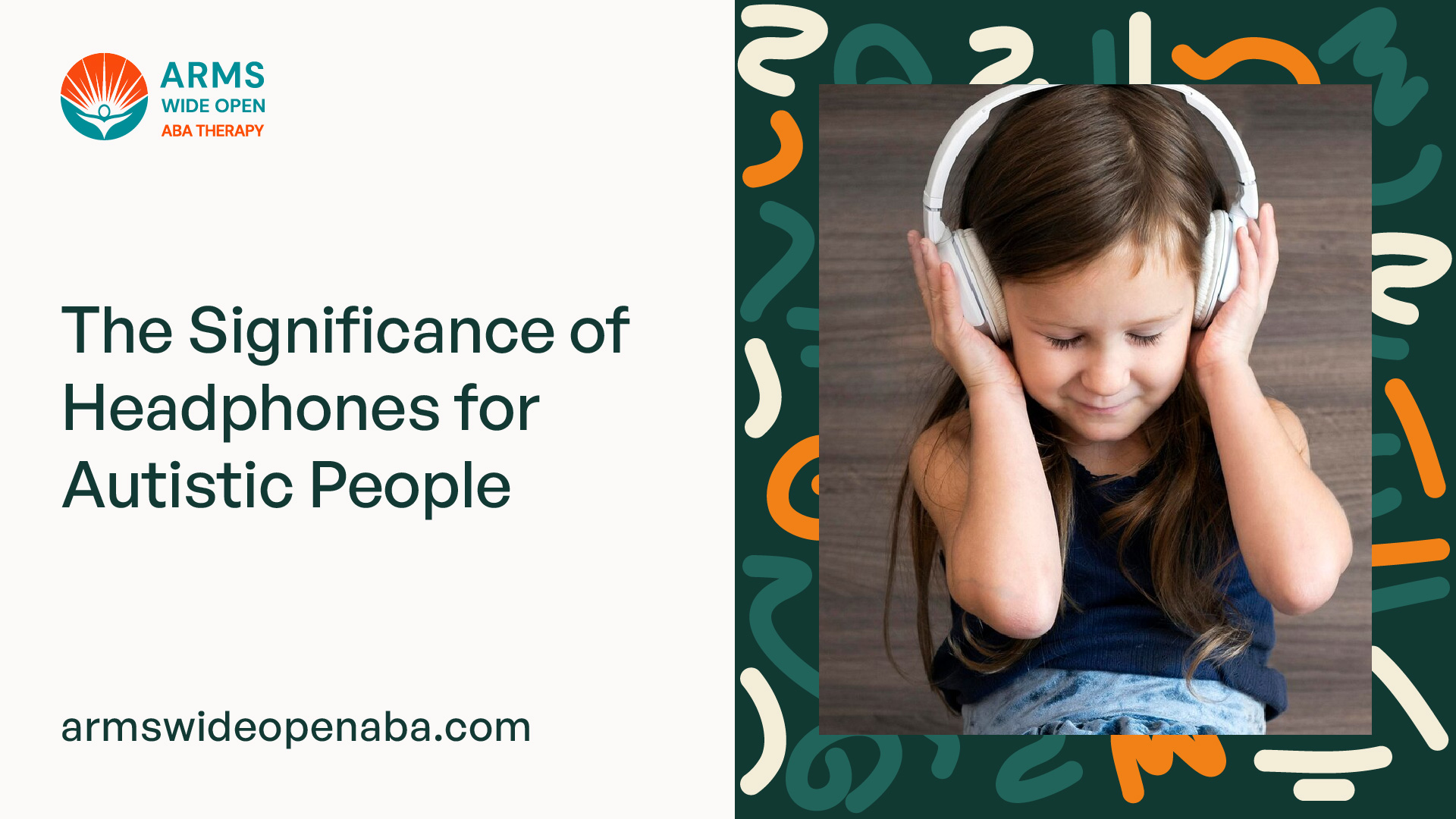
Understanding Autism and Sensory Integration
To comprehend the significance of headphones in sensory integration for autistic individuals, it is crucial to first understand autism spectrum disorder (ASD) and the sensory processing challenges that individuals with autism face.
Overview of Autism Spectrum Disorder
Autism spectrum disorder is a neurodevelopmental condition that affects individuals' social skills, communication abilities, and behavior. It is characterized by a wide range of symptoms and varying levels of impairment. People with autism often experience difficulties in social interaction, verbal and nonverbal communication, and exhibit repetitive behaviors or restricted interests.
Sensory Processing Challenges in Autism
One of the key features of autism is atypical sensory processing. Autistic individuals may have heightened sensitivity or decreased sensitivity to sensory stimuli, such as sound, light, touch, taste, and smell. This can result in sensory overload or sensory seeking behaviors.
Auditory sensitivity, in particular, is a common challenge for individuals with autism. They may experience hypersensitivity to noise, making everyday sounds overwhelming and distressing. This hypersensitivity can lead to difficulties in focusing, processing information, and participating in activities in various environments.
Understanding the sensory processing challenges faced by autistic individuals is essential to recognize the role that headphones play in supporting sensory integration and creating a more comfortable and inclusive environment for them.
Importance of Sensory Support
For individuals with autism, sensory integration plays a crucial role in their overall well-being. Sensory support tools, such as headphones, can significantly aid in managing sensory challenges and promoting a more comfortable and inclusive environment. In this section, we will explore how headphones aid in sensory integration and the benefits they provide for autistic individuals.
How Headphones Aid in Sensory Integration
Autistic individuals often experience sensory processing challenges, where their brains may have difficulty interpreting and responding to sensory stimuli. This can lead to sensory overload, causing distress and interfering with daily activities. Headphones serve as a valuable tool in managing sensory input by providing auditory support.
By wearing headphones, autistic individuals can regulate their auditory environment. They can block out or reduce the intensity of external sounds that may be overwhelming or distracting. This helps create a more predictable and controlled sensory experience, allowing individuals to focus, concentrate, and engage in activities with greater ease.
Benefits of Using Headphones for Autistic Individuals
The use of headphones for sensory support offers several benefits to autistic individuals. These benefits include:
- Noise Reduction: Headphones, particularly noise-canceling ones, minimize or eliminate background noise, creating a quieter environment. This reduction in auditory distractions can enhance attention, concentration, and overall comfort.
- Increased Focus: By reducing auditory input, headphones help autistic individuals filter out irrelevant sounds and concentrate on specific tasks or activities. This increased focus can improve productivity and learning outcomes.
- Self-Regulation: Wearing headphones empowers autistic individuals to take control of their sensory environment. It allows them to create a personal space where they feel more comfortable and secure. This sense of control promotes self-regulation skills and can help reduce anxiety and stress.
- Improved Social Engagement: For some autistic individuals, wearing headphones can serve as a signal to others that they prefer limited social interaction or need additional support. This can facilitate understanding and acceptance from peers, promoting more positive social experiences.
- Enhanced Sensory Comfort: Sensory overload can be overwhelming and distressing. Headphones provide a means to create a soothing and calming environment, reducing sensory stimulation and promoting sensory comfort.
It is important to note that while headphones can be beneficial for many autistic individuals, personal preferences and needs may vary. It's essential to respect individual choices and provide a range of sensory support options to accommodate different sensory sensitivities.
By recognizing the significance of headphones in sensory integration, we can create more inclusive and supportive environments for autistic individuals. The use of headphones, along with other sensory support tools, can empower autistic individuals to navigate their sensory experiences more comfortably, allowing them to thrive and participate fully in various activities and settings.

Types of Headphones for Sensory Needs
When it comes to meeting the sensory needs of individuals with autism, headphones play a significant role in providing a supportive environment. There are different types of headphones available that cater to various sensory requirements. Let's explore three common types: noise-canceling headphones, over-ear headphones, and bone conduction headphones.
Noise-Canceling Headphones
Noise-canceling headphones are designed to minimize external sounds by using advanced technology that actively reduces background noise. These headphones employ microphones to analyze ambient noise and generate sound waves that counteract it, creating a quieter listening experience.
The table below provides some key features and considerations for noise-canceling headphones:
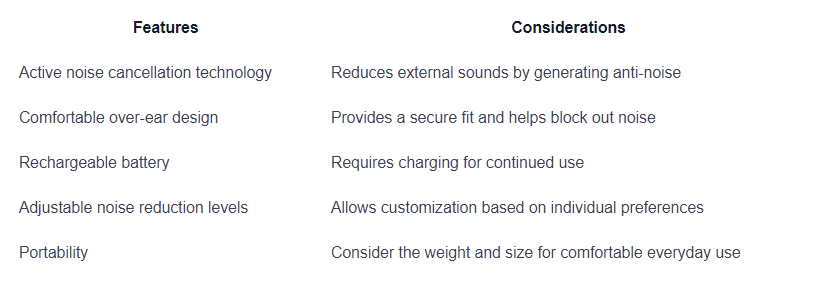
Over-Ear Headphones
Over-ear headphones cover the entire ear, providing a snug fit and effectively blocking out external sounds. These headphones create a more immersive listening experience by reducing ambient noise and allowing the individual to focus on desired auditory input.
The table below highlights some features and considerations for over-ear headphones:
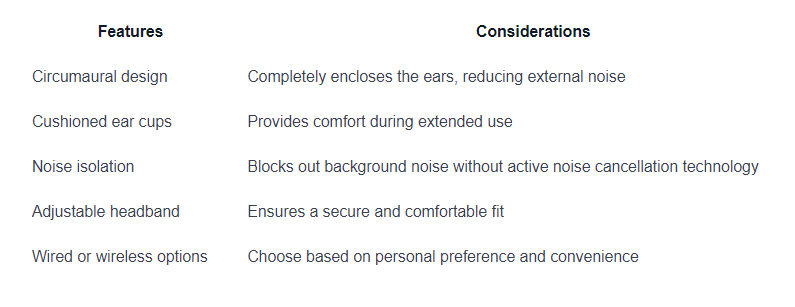
Bone Conduction Headphones
Bone conduction headphones are unique in that they bypass the eardrums and transmit sound vibrations directly to the inner ear through the bones of the skull. This technology allows individuals to hear sounds while still being aware of their surroundings, making them a suitable option for those who may be sensitive to having their ears covered.
The table below outlines some features and considerations for bone conduction headphones:
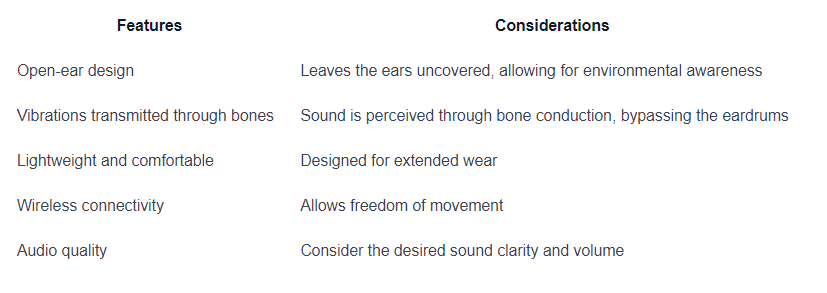
It's important to note that the choice of headphones for individuals with autism should be based on their unique sensory needs and preferences. Finding the right type of headphones can contribute to creating a more comfortable and supportive environment, enabling individuals to engage with their surroundings while minimizing sensory overload.
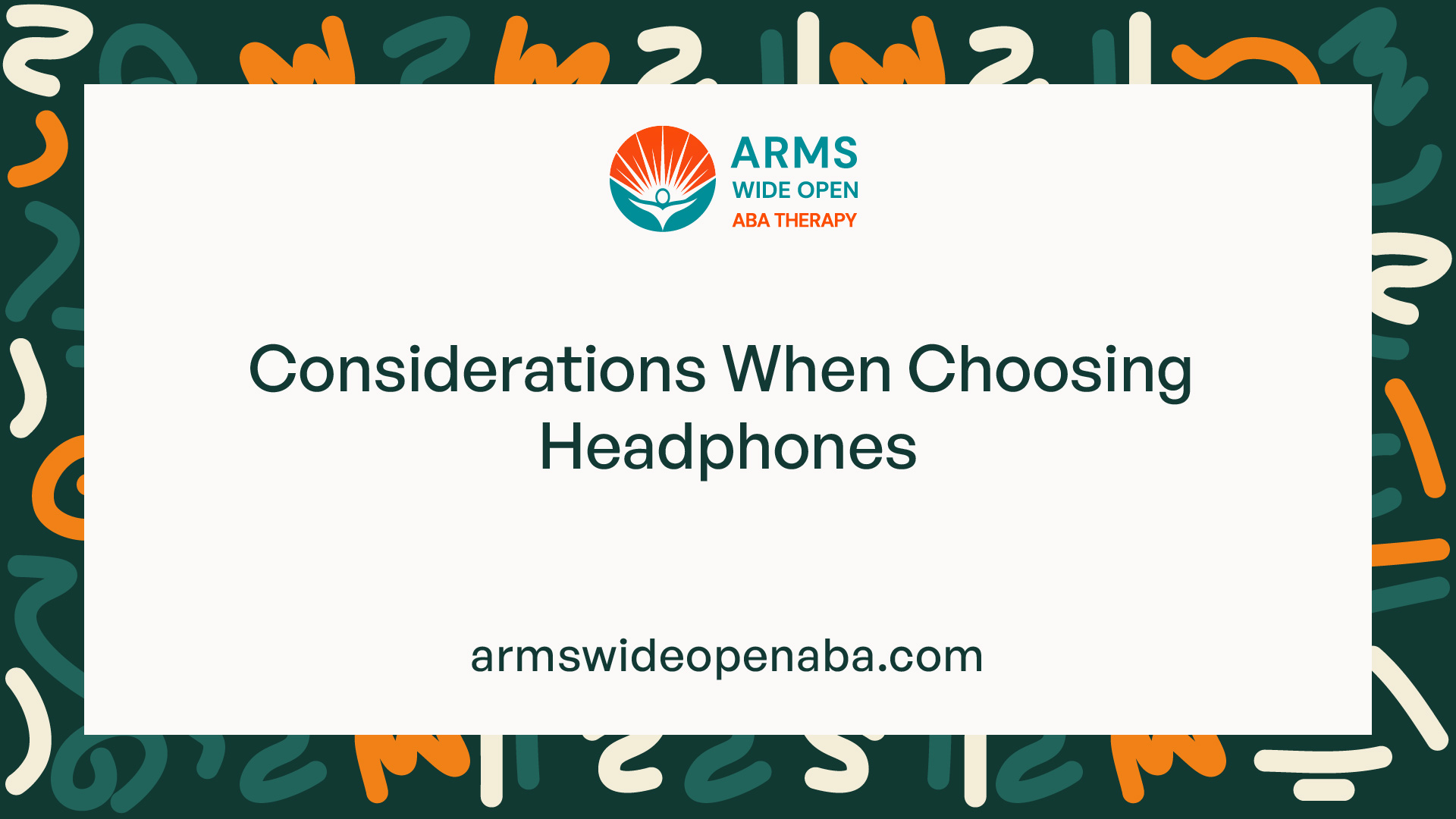
Considerations When Choosing Headphones
When selecting headphones for individuals with autism, there are several important considerations to keep in mind. These considerations include comfort and fit, noise reduction level, and durability and portability.
Comfort and Fit
Comfort and fit are crucial factors when choosing headphones for autistic individuals. It's essential to ensure that the headphones are comfortable to wear for extended periods without causing discomfort or pain. Adjustable headbands and cushioned ear cups can contribute to a better fit and increased comfort.

Noise Reduction Level
Noise reduction is a key feature to consider when selecting headphones for individuals with sensory sensitivities. Noise-canceling headphones, for example, are designed to minimize external sounds by actively canceling out ambient noise. Over-ear headphones also provide a degree of passive noise reduction due to their enclosed design. The noise reduction level required may vary depending on the individual's specific sensory needs.

Durability and Portability
Durability and portability are important considerations, particularly for individuals who may use headphones frequently or carry them to different environments. Sturdy construction and materials can enhance durability, ensuring that the headphones can withstand everyday use. Portability features like foldable designs or carrying cases can make it easier to transport the headphones safely.

By considering factors such as comfort and fit, noise reduction level, and durability and portability, you can make an informed decision when choosing headphones for individuals with autism. Remember that every individual's sensory needs are unique, so it's important to take into account their specific preferences and requirements.
Using Headphones in Different Settings
Headphones play a significant role in supporting individuals with autism in various settings. They provide a means of sensory regulation by reducing environmental stimuli and promoting a sense of calm. Let's explore how headphones can be utilized in different settings to benefit autistic individuals.
At Home
At home, headphones can create a safe and comfortable environment for individuals with autism. They can help to minimize sensory overload by blocking out excessive noise and providing a soothing auditory experience. Autistic individuals can use headphones while engaging in activities such as listening to music, watching videos, or playing games, allowing them to focus and relax.

In School or Work Environments
School or work environments can be overwhelming for individuals with autism due to the presence of various sensory stimuli. Headphones can be a valuable tool in these settings, allowing autistic individuals to create a more controlled auditory environment. By reducing background noise and distractions, headphones help to improve concentration and enhance productivity. They can be particularly beneficial during tasks that require focus and attention, such as studying, taking tests, or working on projects.

During Social Outings
Social outings can present unique challenges for autistic individuals, as they often involve crowded and noisy environments. Headphones can serve as a protective barrier, providing a sense of security and comfort. By reducing overwhelming auditory input, headphones can help autistic individuals navigate social situations with greater ease. Whether attending a social event, going to a restaurant, or traveling on public transportation, headphones offer a way to regulate sensory input and promote a more positive experience.

In each of these settings, the use of headphones for individuals with autism can significantly contribute to their sensory integration and overall well-being. Providing a means of sensory regulation, headphones offer a way to create a more controlled and comfortable auditory environment. By understanding the significance of headphones in different settings, we can better support autistic individuals and promote their participation in various activities.
Supporting Autistic Individuals with Headphones
When it comes to supporting individuals with autism, headphones play a significant role in creating a sensory-friendly environment. By understanding the unique needs of autistic individuals and promoting acceptance and understanding, we can empower them to advocate for themselves and foster inclusive environments.
Encouraging Self-Advocacy
Encouraging self-advocacy is essential in supporting autistic individuals. By providing them with the tools and resources to express their sensory needs, such as headphones, we empower them to communicate their preferences and seek the support they require. This can help them navigate various environments and engage in activities without feeling overwhelmed by sensory stimuli.
Promoting Acceptance and Understanding
Promoting acceptance and understanding is crucial in creating a supportive environment for autistic individuals. By educating others about the significance of headphones in sensory integration, we can foster empathy and reduce stigma. Encouraging open conversations and dispelling misconceptions about autism and sensory processing challenges can help create a more inclusive society where the use of headphones is seen as a valuable accommodation rather than a sign of isolation.
Creating Inclusive Environments
Creating inclusive environments involves making spaces and activities accessible to individuals with sensory sensitivities. This can be achieved by implementing strategies that respect the sensory needs of autistic individuals, such as allowing the use of headphones in various settings. Whether it's at home, in school or work environments, or during social outings, providing opportunities for individuals to comfortably use their headphones can help reduce sensory overload and promote participation and engagement.
By supporting autistic individuals with headphones, we not only provide them with a tool for sensory integration but also contribute to their overall well-being and quality of life. Encouraging self-advocacy, promoting acceptance and understanding, and creating inclusive environments are essential steps in empowering autistic individuals to navigate the world around them with confidence and comfort.
Sources
https://www.abtaba.com/blog/autistic-people-wear-headphones
https://www.yellowbusaba.com/post/why-do-autistic-people-wear-headphones
Similar articles
We’re here to help you

Our team is here to assist you in this process. Contact us for any assistance.
it’s easy to apply
We Accept Most Insurances
Our in-network insurance partnerships make ABA therapy more accessible to families throughout our service areas.







Our Insurance Process
We'll request your insurance details to help us verify your plan's coverage for ABA therapy. Once we've received this information, we'll walk you through your benefits, including copayments, deductibles and out-of-pocket maximums, so you know what to expect in advance.
Our team will then handle the preauthorization and all the necessary paperwork.
.svg)





















.jpeg)


































.jpeg)




.jpeg)







.jpeg)











.jpeg)
















